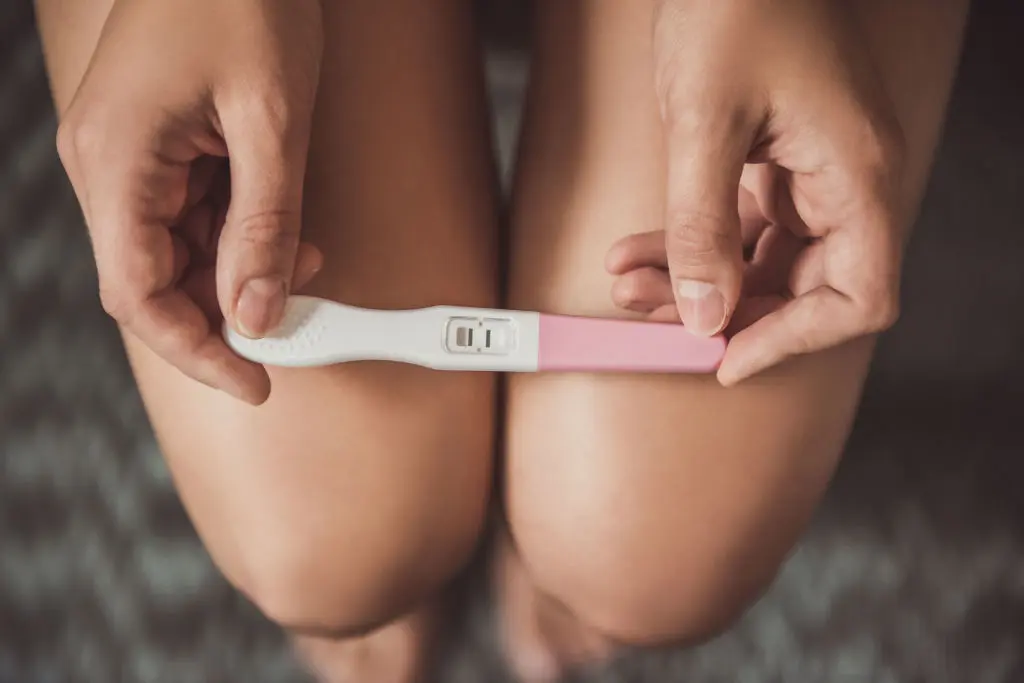Should You Change How You Exercise While Trying To Conceive?

September 7, 2022

Before we discuss how to approach exercise throughout each trimester, let’s start with an earlier stage of the pregnancy journey that many women go through: trying to conceive.
Here at Sweat, we know everyone’s conception journey looks a little different. For some, the road to parenthood is pretty straightforward while for others, it might be a path that has been punctuated with difficulty or loss.
Whether you’re just about to start trying to conceive for the first time, you’ve been pregnant before or you’re trying to have a baby with the help of assisted reproductive technology, this article will explore how to approach exercise during this time and the benefits you might find in staying active.
But remember, every woman (and every pregnancy!) is so different - and available research exploring fitness and fertility differs greatly in terms of the women they are studying and the questions researchers are looking to answer. That’s why it’s so important to always listen to your body and speak to your healthcare professional to understand what works best for you.

Can I exercise while trying to conceive?
Yes! Regular exercise has many benefits for your physical and mental health, and making movement a part of your routine before you begin trying to conceive, during your conception journey and throughout pregnancy is a good idea.
Your Fertility (a government-funded public health education program in Australia) has highlighted the role of exercise and its benefits for women who are trying to get pregnant, noting that Australian and international guidelines recommend at least 30 minutes of moderate-intensity physical activity each day.
However, while Your Fertility acknowledges that exercise can support female fertility, they caution that for those looking to improve their assisted reproductive technology outcomes, a large amount of high-intensity exercise may impact your fertility and should be avoided.
If you have any concerns about whether your current workout schedule is appropriate during this period, speak with your healthcare provider for advice on establishing an exercise routine that is best for you.
Is sex a good workout?
While there are so many ways to start a family and many couples or individuals will seek out reproductive technology to help them fall pregnant, for others, it all begins by shagging with intent. While it’s certainly fun, how does sex measure up when it comes to physical activity?
It’s definitely more intensive than a sedentary activity like streaming your favourite TV show, but sex doesn’t challenge your muscles and cardiovascular system in the same way as structured exercise. That’s not to say there aren’t plenty of other benefits of procreation for you to enjoy.
Done right, sex can do wonders for your mood, improve your sleep quality (especially if you orgasm, according to this study) and even help lower your blood pressure.

Exercise and your menstrual cycle
If you’re trying to conceive, you’ll be aware of the four main phases of your menstrual cycle: menstruation, the follicular phase, ovulation and the luteal phase.
Hormonal changes throughout your cycle might impact your energy levels, what kind of exercise you feel like doing and your physical performance, so it’s worth taking which stage of your cycle you are in into account when planning your workout schedule.
For example, ovulation tends to be a high-energy time while your energy levels tend to decrease the closer you get to menstruation.
Tracking your period and symptoms can help you become more familiar with how your body changes and how each phase of your cycle influences your energy levels, hormones, mood, and the kind of movement you feel like doing.
Finding the right balance
For some women, weight might play a role when you’re trying to conceive. There are many reasons why a woman might be under or overweight, but being at a healthy weight can increase your chances of falling pregnant. According to IVF Australia, being significantly over or underweight can affect your hormone levels and thus ovulation.
If you’re concerned about your need to gain or lose weight, it’s recommended you work with your healthcare provider to better understand your body, hormones, diet and exercise routine.
If you’re overweight, physical activity can have a positive impact on your health and fertility. A prospective cohort study from 2012 investigated the association between physical activity and fecundability (the probability of conception during each menstrual cycle).
The study followed over 3,500 Danish women who were planning a pregnancy and found moderate physical activity was associated with a small increase in fecundability, regardless of the women’s BMI, while any physical activity might improve fertility outcomes for overweight or obese women. However, the study cautioned that further research in this area is needed.
Some of these findings were supported by a later 2016 study published in Fertility and Sterility, which evaluated 2,062 women from the United States and Canada who were planning a pregnancy. This study found moderate physical activity improved fertility outcomes among all women, while vigorous physical activity was associated with improvements in overweight and obese women.
What are the benefits of staying active?
There are many physical and emotional benefits to leading an active lifestyle - before, during, and after your pregnancy.
Keeping active before and during the early stages of pregnancy might not only help some women fall pregnant, but also help reduce certain health risks. A 2020 study found that physical activity prior to pregnancy combined with a lower initial weight can help reduce the risk of developing gestational diabetes and cardiovascular risk factors during pregnancy.
How much exercise should I be doing?
It really depends on your current fitness and activity levels. If exercise has always been part of your day-to-day life, continuing to exercise at the same level while you’re trying to fall pregnant naturally is generally safe and healthy.
However, if your workout schedule is pretty vigorous or you’re already under a lot of stress in your daily life, your doctor might advise you to cut back, especially if you’re having trouble falling pregnant naturally.
For example, women who are elite athletes or who exercise intensely are at greater risk of developing amenorrhoea, which is the absence of a menstrual period. Some of the causes of this condition are thought to be exercise-related hormones like cortisol and a low level of body fat, as our bodies cannot menstruate if we fall below a certain percentage of body fat. According to Better Health Victoria, athletic amenorrhoea has no impact on long-term fertility once menstruation returns, but the time it takes to restore your menstrual cycle can vary significantly.
Remember, moving your body doesn’t have to mean completing a high-intensity exercise program or working out every day. Everything from swimming to brisk walking and yoga are great ways to stay active and you should make your rest days a priority each week, too.

Exercise and assisted conception
If you’re pursuing assisted fertility treatment to help you fall pregnant, you’ll already be set up with a healthcare provider who understands you and your medical history, so it’s essential you talk to them about any concerns you have about exercise and find out which safe, doctor-approved exercises best suit you.
Remember that undergoing reproductive measures such as IVF can be incredibly taxing on your body and your emotional health, so take it easy and listen to your body and what you need.
A 2018 systematic review and meta-analysis found that physical activity prior to IVF/ICSI cycles was associated with increased rates of clinical pregnancy and live births. However, if you’re currently undergoing IVF, it’s recommended you avoid rigorous, high-intensity exercise and talk to your healthcare professional about any planned physical activity.
Many women who are undergoing an IVF cycle are advised against exercising, due to the risk of ovarian torsion. A 2003 study published in the Human Reproduction journal stated that the incidence of ovarian torsion has been reported to be increased during controlled hyperstimulation of the ovaries. While rare, ovarian torsion is a serious condition that presents as a medical emergency.
According to Yale Medicine, it occurs when the ovary (and sometimes the fallopian tube) twists on the tissues that support them, cutting off blood supply. It usually occurs on just one side and the symptoms come on suddenly and with intensity, with common symptoms including severe pain, vomiting and nausea.
Need to opt for something low-impact?
If you’re looking for something that’s gentler on your body or your healthcare provider has advised against high-impact exercises, remember there are plenty of other ways to stay active, such as strength training, swimming, walking, Pilates,cardio and low-impact workouts.

The two-week wait
Those who have tried to conceive will be familiar with the anxiety or unease that can accompany the two-week wait! This is the luteal phase of your menstrual cycle - the time between ovulation and your expected period where you’re waiting to find out if you’ve fallen pregnant.
Because you might be pregnant during this time, it’s important to talk to your doctor about what kind of activity might best suit you.
If you’re undergoing IVF, you’ll also have a two-week wait between your embryo transfer and waiting to discover if you are pregnant and it’s completely normal to experience a heightened sense of anxiety, apprehension or overwhelming feelings during this time. Be gentle with yourself and reach out to your loved ones for support when you need to.
Every woman is different
We know that every woman’s fitness routines, pregnancies and conception journeys look so different. Always speak to your healthcare provider about any concerns you might have and understand the best way to move your body from bump through to birth and beyond.
Disclaimer: Although exercise during and after pregnancy has been associated with multiple health benefits, you should consult with and obtain permission from your physician or other health care provider before starting this or any other fitness program to determine if it is right for you, especially while pregnant and in the months following your pregnancy. Not all exercise is suitable for everyone or every pregnancy and exercises, including those contained in this article, may result in injury. Do not start this fitness program if your physician or health care provider advises against it.
This article is for informational purposes only. Any instruction, information, or guidance contained in this article is not a substitute for medical advice, consultation, and/or medical treatment from your doctor or healthcare provider. Do not delay seeking medical advice, disregard medical advice, or discontinue medical treatment because of any instruction, information or guidance contained in this article.
You are responsible for your own safety and are participating in this fitness activity at your own risk. Start slowly and do not exceed the exercise recommended by your physician or health care provider. If you experience faintness, dizziness, pain, discomfort, bleeding, or shortness of breath at any time while exercising, stop immediately and seek medical advice.

A more empowered you starts with Sweat, and our editorial team is here to bring you the latest fitness tips, trainer recommendations, wellbeing news, nutritional advice, nourishing recipes and free workouts.
* Disclaimer: This blog post is not intended to replace the advice of a medical professional. The above information should not be used to diagnose, treat, or prevent any disease or medical condition. Please consult your doctor before making any changes to your diet, sleep methods, daily activity, or fitness routine. Sweat assumes no responsibility for any personal injury or damage sustained by any recommendations, opinions, or advice given in this article.
Wellbeing